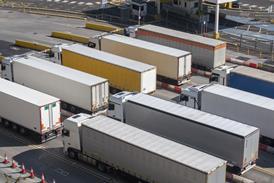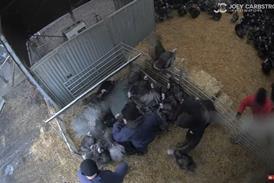It's 3am, and the phone's ringing. "Don't panic," says the voice at the other end, "but your factory has just gone up in smoke". If disaster strikes, you need a plan B - and this doesn't mean ringing up your insurers, stress the crisis management experts. Insurance might pay for a new factory, but it won't rebuild a shattered reputation or win back lost market share. "Great companies don't make excuses"' says Rod Fountain, CEO at business continuity specialist Survive. "They are wise before the event".
A properly funded crisis management strategy is not a luxury that only large corporations can afford it's a necessity that no business can afford to be without, warns the Business Continuity Institute. And if this doesn't spur the board into action, the stark statistic splashed on the front page of its 2003 report, Expecting the Unexpected, might: More than 40% of businesses affected by the Manchester bombing went out of business.' And memories of the IRA bomb in Ealing in August 2001 are still fresh.
The food industry is still "miles behind" the banks when it comes to preparing for the worst, claims Fountain. However, things are beginning to change. Corporate governance law now requires plcs to spell out exactly what they are doing to tackle risks in their annual reports. And a multitude of factors from soaring insurance premiums to the fuel crisis and terrorist attacks have pushed business continuity further up the corporate agenda.
Crisis management experts across the retail sector met for the first time in May to form a new working group hosted by Survive. Supply chain disruption and insurance were top of the agenda.
Key trading partners must be involved
"Say you have a network of regional distribution centres," explains Tesco head of risk management Paul Gilhooly. "If one is taken out, you just re-route deliveries to your other depots. If a national distribution centre goes up in smoke, however, you're in trouble."
Retailers are also beginning to realise how important it is to involve suppliers and logistics companies in their planning, says Sainsbury business continuity manager Steve Mellish.
"The best laid crisis management plans are not worth the paper they are written on if key trading partners do not have business continuity plans of their own," he says.
Most large companies back up data on a daily basis and can relocate to other offices if their physical assets are damaged, adds Richmond Foods commercial director Tony Waldron. Better telecommunications also make the loss of bricks and mortar potentially less devastating, as staff can simply work remotely until alternative offices are located, he points out.
But this is no use at all if you don't talk to your trading partners about managing risk. "Some of it is just common sense. For example, we looked at some of our raw material contracts a couple of years ago, and realised we only had one supplier. What would we do if they went out of business?"
As insurance premiums rocket, manufacturers are increasingly focusing on prevention rather than cure, says Nestlé technical risk manager David Hulme. "We have invested in safety measures to the extent that we now have about 50 small fires a year at our York Kit Kat plant. It used to be more than 350. Now we are saying to our insurers, we're prepared to take on more risk in the form of higher excesses, instead of paying higher premiums."
Once you have identified the risks, and established how you will deal with them, the next step is devising a clear communications strategy so that everyone knows exactly who is responsible for what, says Sainsbury's Mellish. As anyone that has joined a new company and spent the first morning wading through a lengthy tome outlining company policies will testify, he adds, "big manuals are a complete waste of time. The information is out of date and no one remembers any of it anyway."
Instead, Sainsbury gives every new member of staff a pocket guide with a freephone number dialling up recorded information. This is updated constantly so that staff can ring up and find out what to do in the event of a catastrophe, or simply a minor disruption to the business. Typically, if there is a serious incident, a crisis management team consisting of senior directors will be summoned. They will then call upon the business units affected to swing their own crisis management plans into action. But developing a separate plan for every possible disaster is both unwieldy and unwise, stresses Mellish. "What if something happens that you haven't predicted? You need to develop processes that can be applied to any incident."
The potential for minor incidents to cause major upheaval should not be overlooked either, he adds.
While global terrorism has grabbed the headlines, more mundane events such as power failure, or discovering that NTL is digging up the road outside your store, can also cause major headaches if you have not factored them in. Tesco's headquarters in Prague were out of action for over a week last year when floods swept through central Europe and staff could not access the building. However, standard plans for what to do when staff can't access key buildings were invoked, and key IT and supply chain functions simply switched to a command centre at one of Tesco's stores elsewhere in the city.
Similarly, BT exchange failure could have wreaked havoc at Tesco.com last July, but recovery backup webservers were up and running within 30 minutes and most people didn't even notice there was a problem, says Gilhooly. "It could have been a complete disaster."
If a risk manager is doing his job well, he is unlikely to grab much of the limelight, says Nestlé's Hulme ruefully. "This job is a huge anticlimax. We've got all these plans and all this great kit it makes you want to push the button and see what happens!"
{{ANALYSIS }}
A properly funded crisis management strategy is not a luxury that only large corporations can afford it's a necessity that no business can afford to be without, warns the Business Continuity Institute. And if this doesn't spur the board into action, the stark statistic splashed on the front page of its 2003 report, Expecting the Unexpected, might: More than 40% of businesses affected by the Manchester bombing went out of business.' And memories of the IRA bomb in Ealing in August 2001 are still fresh.
The food industry is still "miles behind" the banks when it comes to preparing for the worst, claims Fountain. However, things are beginning to change. Corporate governance law now requires plcs to spell out exactly what they are doing to tackle risks in their annual reports. And a multitude of factors from soaring insurance premiums to the fuel crisis and terrorist attacks have pushed business continuity further up the corporate agenda.
Crisis management experts across the retail sector met for the first time in May to form a new working group hosted by Survive. Supply chain disruption and insurance were top of the agenda.
Key trading partners must be involved
"Say you have a network of regional distribution centres," explains Tesco head of risk management Paul Gilhooly. "If one is taken out, you just re-route deliveries to your other depots. If a national distribution centre goes up in smoke, however, you're in trouble."
Retailers are also beginning to realise how important it is to involve suppliers and logistics companies in their planning, says Sainsbury business continuity manager Steve Mellish.
"The best laid crisis management plans are not worth the paper they are written on if key trading partners do not have business continuity plans of their own," he says.
Most large companies back up data on a daily basis and can relocate to other offices if their physical assets are damaged, adds Richmond Foods commercial director Tony Waldron. Better telecommunications also make the loss of bricks and mortar potentially less devastating, as staff can simply work remotely until alternative offices are located, he points out.
But this is no use at all if you don't talk to your trading partners about managing risk. "Some of it is just common sense. For example, we looked at some of our raw material contracts a couple of years ago, and realised we only had one supplier. What would we do if they went out of business?"
As insurance premiums rocket, manufacturers are increasingly focusing on prevention rather than cure, says Nestlé technical risk manager David Hulme. "We have invested in safety measures to the extent that we now have about 50 small fires a year at our York Kit Kat plant. It used to be more than 350. Now we are saying to our insurers, we're prepared to take on more risk in the form of higher excesses, instead of paying higher premiums."
Once you have identified the risks, and established how you will deal with them, the next step is devising a clear communications strategy so that everyone knows exactly who is responsible for what, says Sainsbury's Mellish. As anyone that has joined a new company and spent the first morning wading through a lengthy tome outlining company policies will testify, he adds, "big manuals are a complete waste of time. The information is out of date and no one remembers any of it anyway."
Instead, Sainsbury gives every new member of staff a pocket guide with a freephone number dialling up recorded information. This is updated constantly so that staff can ring up and find out what to do in the event of a catastrophe, or simply a minor disruption to the business. Typically, if there is a serious incident, a crisis management team consisting of senior directors will be summoned. They will then call upon the business units affected to swing their own crisis management plans into action. But developing a separate plan for every possible disaster is both unwieldy and unwise, stresses Mellish. "What if something happens that you haven't predicted? You need to develop processes that can be applied to any incident."
The potential for minor incidents to cause major upheaval should not be overlooked either, he adds.
While global terrorism has grabbed the headlines, more mundane events such as power failure, or discovering that NTL is digging up the road outside your store, can also cause major headaches if you have not factored them in. Tesco's headquarters in Prague were out of action for over a week last year when floods swept through central Europe and staff could not access the building. However, standard plans for what to do when staff can't access key buildings were invoked, and key IT and supply chain functions simply switched to a command centre at one of Tesco's stores elsewhere in the city.
Similarly, BT exchange failure could have wreaked havoc at Tesco.com last July, but recovery backup webservers were up and running within 30 minutes and most people didn't even notice there was a problem, says Gilhooly. "It could have been a complete disaster."
If a risk manager is doing his job well, he is unlikely to grab much of the limelight, says Nestlé's Hulme ruefully. "This job is a huge anticlimax. We've got all these plans and all this great kit it makes you want to push the button and see what happens!"
{{ANALYSIS }}















No comments yet